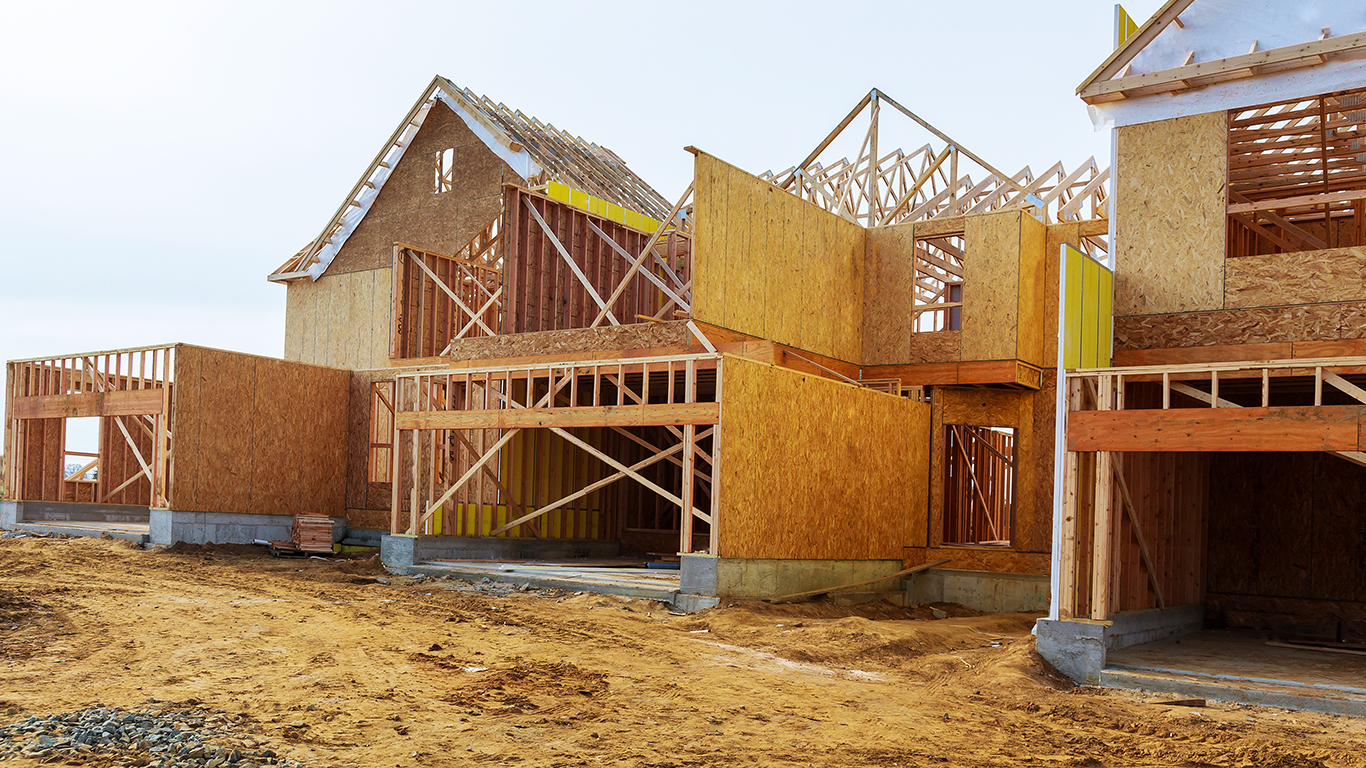Housing
ITB and XHB: 2 Top Homebuilder ETFs Different as Night and Day

Published:
Last Updated:

The market for U.S. homes is driven by three principal engines: mortgage loan interest rates, home prices and available inventory. At the end of March 2019, all three were doing their best to entice more buyers into the market.
Mortgage interest rates had dipped to near 4%, annual home price increases had moderated and the for-sale inventory was improving slowly. Low interest rates and slowing price growth meant that homes sold more quickly, putting pressure on inventory. That means more homes need to be built to keep up with demand.
Add to the housing market engines rising incomes and low inflation and U.S. homebuilders would appear to be in pretty good shape going forward. Last week, the National Association of Home Builders reported that there were 344,000 new homes for sale in March, equivalent to a six-month supply. During the month, sales of new homes rose to a seasonally adjusted annual rate of 692,000 units.
Half the new homes sold in March were priced under $300,000, compared to just 39% at the price point in March 2018. The median price in March was $302,700, compared to a median in March 2018 of $335,400.
The catch, for homebuilders, is that workers are in short supply and so are buildable lots. That makes it harder for builders to construct single-family houses at or below that $300,000 price point.
Here’s a look at two exchange-traded funds (ETFs) that are focused on homebuilding. One is more heavily weighted to new home builders while the other includes more building materials suppliers. The latter approach may better encompass the home remodeling and disaster recovery markets.
The iShares U.S. Home Construction ETF (ITB) is a non-diversified ETF tracking the results of the Dow Jones U.S. Select Home Construction Index. As of April 26, the fund’s top two holdings were homebuilders D.R. Horton Inc. (NYSE: DHI) and Lennar Corp. (NYSE: LEN) with stakes of 13.95% and 13.28%, respectively.
The fund holds stakes in 48 companies, with homebuilders accounting for nearly two-thirds (66.51%) of the fund’s market value. The next largest fund category (12.69%) is building products and includes firms like Masco Corp. (NYSE: MAS), which makes plumbing products (Delta and Peerless brands, among many others) and decorative products like paint (Behr and Killz paints, for example) and cabinetry, window and other specialty products. Home improvement giants Home Depot Inc. (NYSE: HD) and Lowe’s Companies Inc. (NYSE: LOW) combine to make up 9.02% the fund assets and are part of its third largest (10.47%) category, home improvement. Many of the building products brands are also sold at Home Depot and Lowe’s retail stores.
Net assets total $1.2 billion on 32.2 million shares outstanding. The net asset value of the fund is $37.74 per share as of April 25. The 52-week range is $28,.25 to $40.97. The fund was created in May 2006 and has an expense ratio of 0.43%. Since its inception, the fund has posted a negative return of 1.89%, compared to a negative return of 1.19% for its underlying benchmark index. Since the beginning of the year, the fund is up about 20%.
The SPDR S&P Homebuilders ETF (NYSEARCA: XHB) is a non-diversified fund that seeks to track the performance of the S&P Homebuilders Select Industry Index. Its top holding is homebuilder Pulte Group Inc. (NYSE: PHM), which accounted for 4.95% of holdings as of April 26. Fortune Brands Home & Security Inc. (NYSE: FBHS) and Lowe’s each accounts for 4.90%, and Home Depot accounts for 4.86%. Fortune Brands operates in three building products segments: cabinets, plumbing, and doors and security.
The fund is composed of 35 equities, of which 16 are homebuilders (46% of holdings) and 10 (about 29%) are building products suppliers. The remaining nine include two home improvement stores, four home furnishing firms and three appliance makers.
The fund’s net assets total $706.7 million, and the net asset value per share is $40.50, with 17.45 million shares outstanding. The fund was created in January 2006 and has a gross expense ratio of 0.35%. From its inception until the end of March, the fund has posted a negative return of 0.46%. But for the year to date, the fund is up 18.9%.
Will these funds be able to continue their torrid pace for the rest of the year? If, as expected, the Federal Reserve does not raise interest rates this year, that is a boost for homebuilders. More moderate home price increases also help, although this squeezes margins as labor and materials costs rise. Inventories are rising a little, but if they can’t keep pace with demand, that will send prices up again. That drag could be offset by rising incomes and low inflation.
Homebuilding is, essentially, a play on the overall U.S. economy. If Americans feel the economy is improving, their appetite for home ownership rises. Expect to hear plenty of news about the economy as the run-up to next year’s presidential election generates more heat.
Thank you for reading! Have some feedback for us?
Contact the 24/7 Wall St. editorial team.